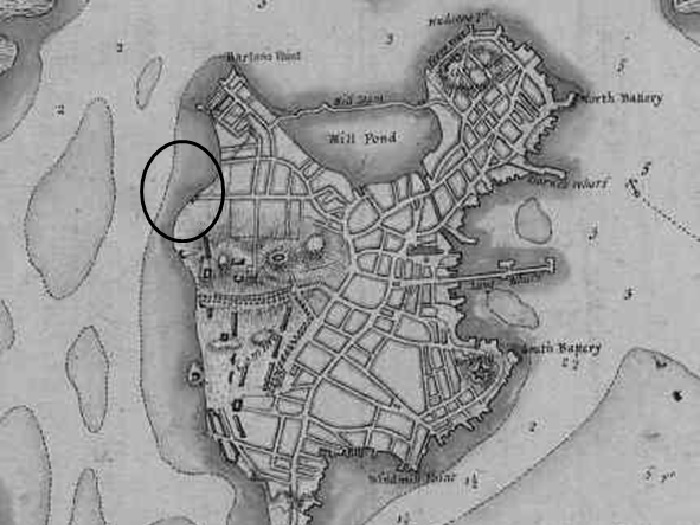
Figure 0: Map of Boston 1775 (http://www.celebrateboston.com/map/boston-1775.htm )
Boston, Massachusetts has gone through many changes since its establishment in the 1630s, with particular regard to the land. Referencing an early map of Boston in the 18th century, the present-day shoreline along the Charles River did not exist. What was once just a body of water is now covered in land as a result of major landfills in the 18th century(Figure 0). The site I have chosen was built upon the major landfills in the 1850s. It is bordered by Massachusetts Avenue, Newbury Street, Public Alley 429 and 428, and Gloucester Street (Figure 1).
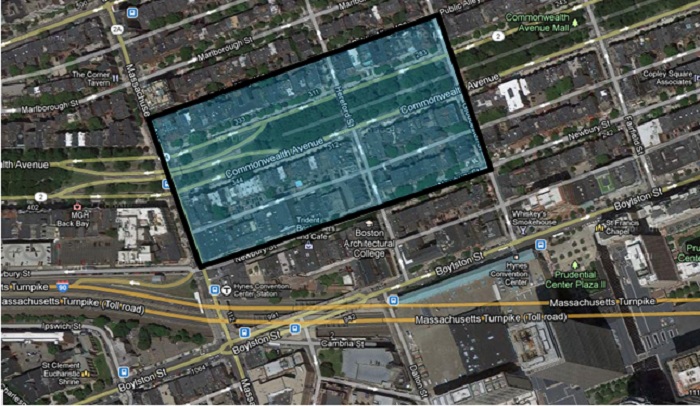 Figure 1: Map of the Newbury Street Site
Figure 1: Map of the Newbury Street Site
Imagery ©2013 DigitalGlobe, GeoEye, MassGIS, Commonwealth of Massachusetts EOEA, Sanborn, USDA Farm Service Agency, Map data ©2013 Google, Sanborn
On the site lie three differently used streets. The first, Commonwealth Avenue, is a residential street. The second, Public Alley 428 and 429, are alleys used for parking. The third, Newbury Street, is used for commercial businesses. The natural processes - involving water, trees, temperature, gravity, and sunlight- and different usages have shaped three very different streets into the way they are today.
Public Alleys
The Public Alleys serve their main purpose to collect runoff water from Massachusetts Avenue and provide parking spaces for the residence on Marlborough Street and Commonwealth Avenue. The consequences natural processes, erosion, swelling soil, and gravity have shaped the Public Alleys into what they are today and will continue to shape them in the future.The Topography of the Lane
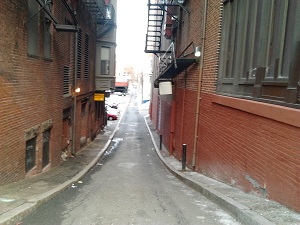 Figure 2: Public Alley 428
Figure 2: Public Alley 428Public Alley 428 and 429 are one-lane narrow alleys located in between Marlborough Street and Commonwealth Avenue. Both are paved with gravel. But due to differences in topography, each experience different natural processes. Public Alley 429 slopes downward from the Massachusetts Avenue side and levels out at Hereford Street (Figure 2). This causes water from Massachusetts Avenue to flow down the alley. Consequently, the gravel experiences water erosion over time (Figure 3) (Elkins 28). Public Alley 428 continues from Public Alley 429 as a relatively flat land. In contrast, Public Alley 428 does not experience as much cracks in the gravel as does Public Alley 429 (Figure 4).
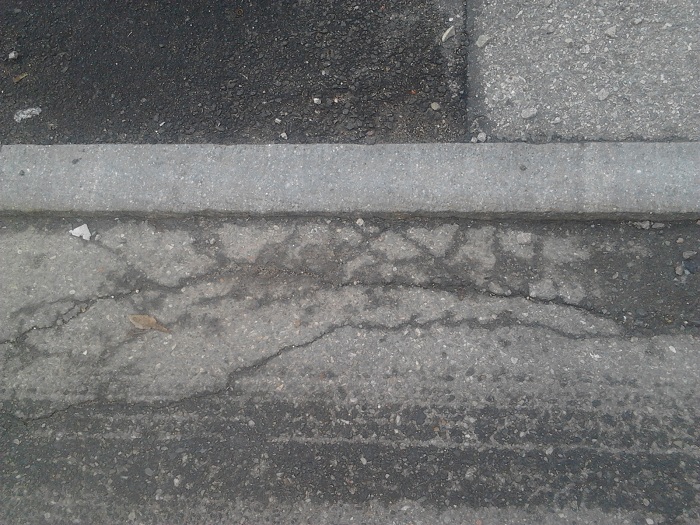 Figure 3: Water Erosion in Public Alley 429
Figure 3: Water Erosion in Public Alley 429
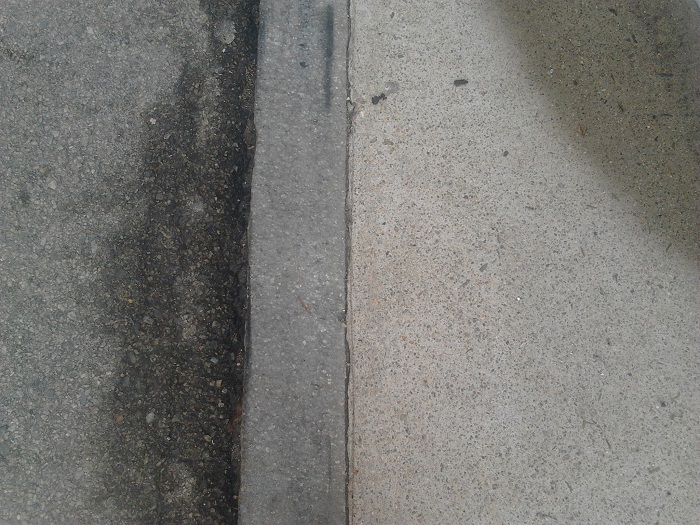 Figure 4: Not Much Water Erosion in Public Alley 428
Figure 4: Not Much Water Erosion in Public Alley 428
Errosion of Parking Lots
On either side of the Public Alleys are parking spaces for the houses and apartments located on Marlborough Street and Commonwealth Avenue. Due to human choice, these parking lots are covered in either stone, brick, or gravel. This makes it easy to see how water and cars affect each pavement types.
The parking lots covered in gravel seemed to be the most intact (Figure 5). Although the parking space in Figure 5 looks fairly new, many of the older gravel lots are leveled and free of major cracks as well. Observations show that this type of pavement may last in the longer run because water cannot seep through gravel and the gravel is compact enough to take the weight of a car. This may be the reason why the majority of the parking spaces in the Public Alleys are composed of gravel as opposed to stone or brick.
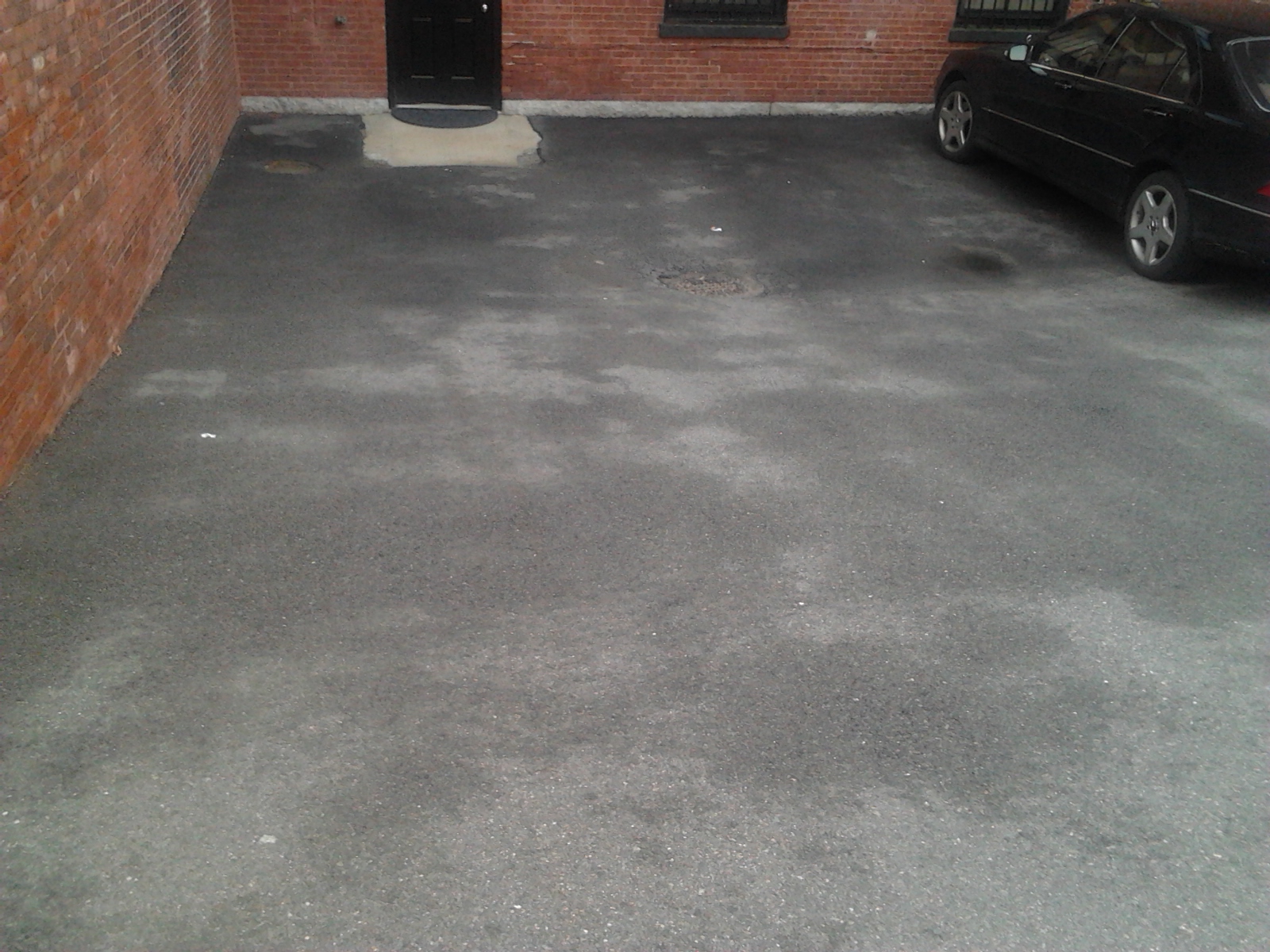 Figure 5: Gravel Pavement
Figure 5: Gravel Pavement
Figure 6 shows a sloping parking lot covered in stone. Each stone is set about an inch apart of one another and looks to be held together by a sand mixture. At the top of the photo is a drain that collects the water that flows over the pavement, as well as the water that seeps through the sand mixture. Since a drainage system is in place, this shows that whoever designed the pavement took into consideration the effects that water might cause (Spirn 117). This pavement type may not last as long as the gravel but would definitely last longer than a brick pavement.
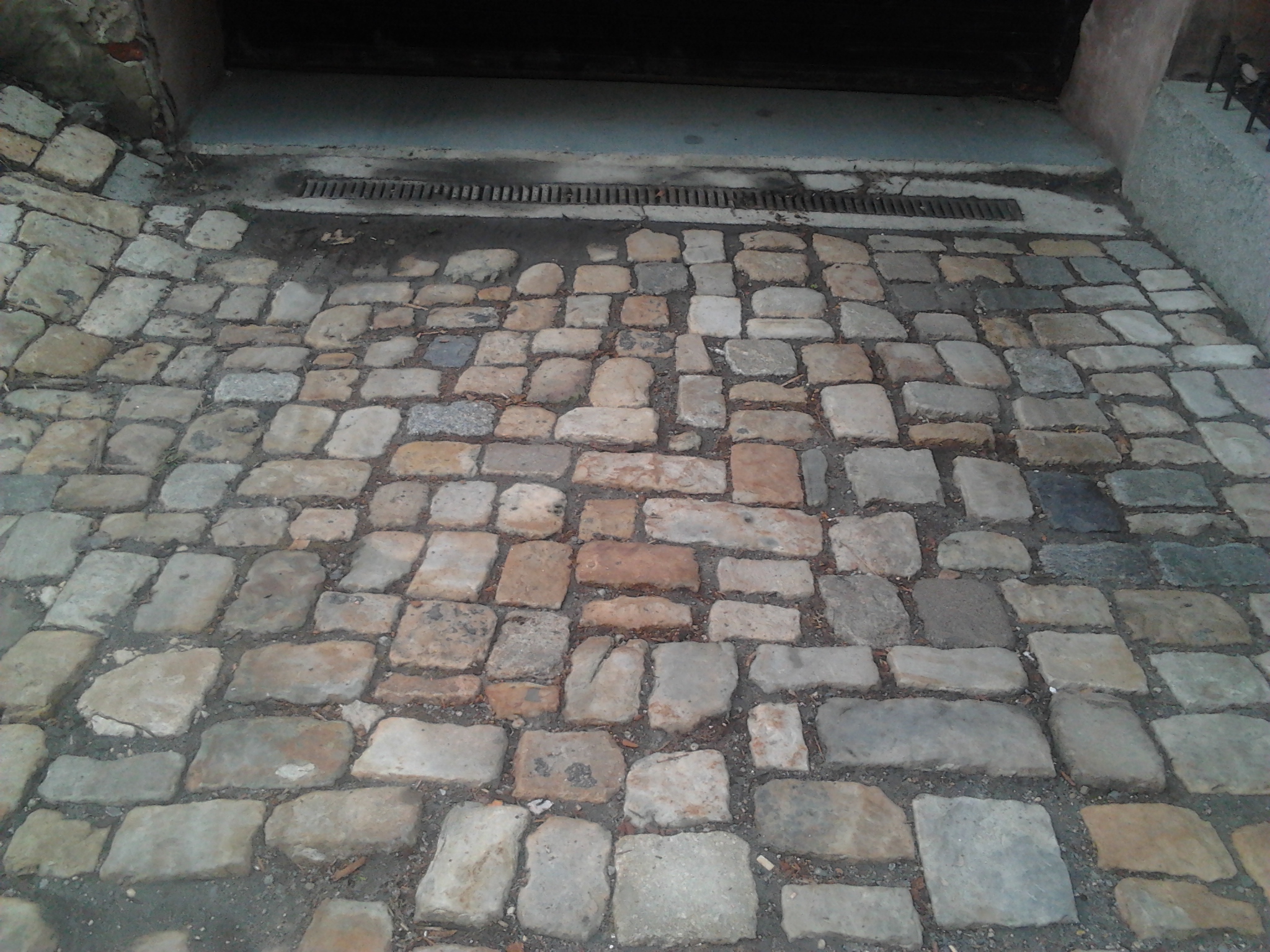 Figure 6: Stone Pavement
Figure 6: Stone Pavement
A few parking spaces were covered in brick. Just by looking at Figure 7, it is not a particularly good idea to use brick as a way to pave the ground. A combination of the weight of the vehicles and improper drainage systems has made the brick dent, and water has started to pool and seep in the sand. In The Granite Garden, Spirn refers to this as swelling soil (Spirn 117). In a place like Boston where the ground is quite firm, swelling soil would not be a huge problem. But if this brick configuration was found in an area prone to earthquakes, i.e. California, this could lead to greater problems such as landslides (Spirn 115).
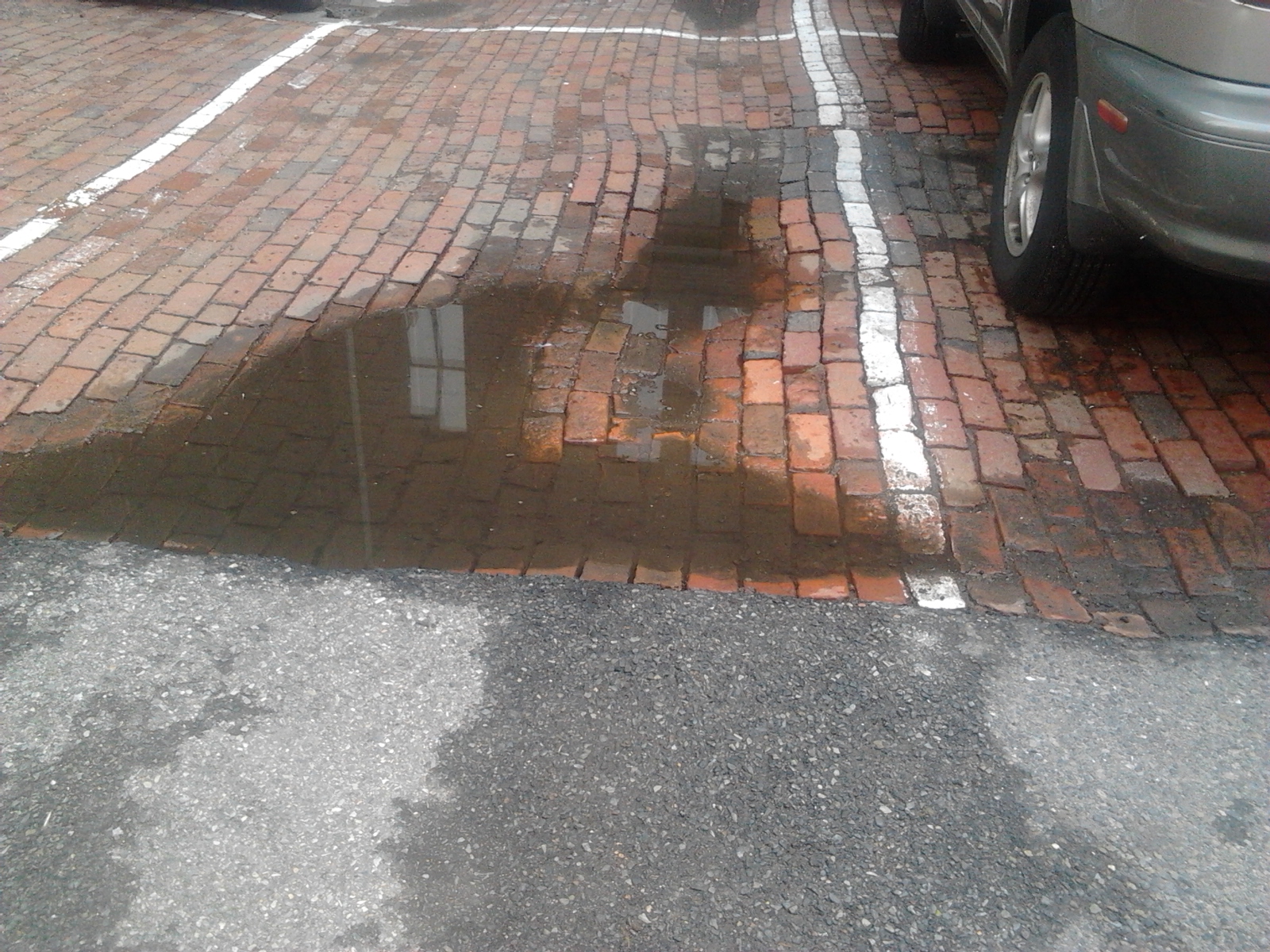 Figure 7: Brick Pavement
Figure 7: Brick Pavement
The Bigger Picture
The bigger picture here is shown by the current state of the Public Alley. The appearance shows that despite the errosions that occur on the pavement, all of this does not matter because the Public Alley is hidden from the normal eye. Keeping up the appearance is not a priority and this shapes the way the Public Alleys are today.
Commonwealth Avenue
Unlike the narrow one-laned Public Alleys which are hiddin from the public's sight, Commonwealth Avenue is much more appealing to the eye. Because it is a residential street, Commonwealth Avenue has shaped into a street to meet the needs of the residents. It is important to note that Commonwealth Avenue is among one of the most wealth streets in Boston. As a result, decisions of the appearance of Commonwealth Avenue were influenced heavily by man. The water-drainage system is better than the Public Alleys and the sidewalk is covered in all concrete. The Commonwealth Avenue Mall is made up of huge elm trees planted for aesthetic reasons (Spirn 173). Among the many other attributes of Commonwealth Avenue, it is about five times the width of the Public Alleys allowing for sunlight to produce a lot more vegetation in contrast to the Public Alleys. But with many man-made creations seen on the avenue, it was inevitable that not so pleasant natural processes would also affect Commonwealth Avenue. One example is the stumped tree in Figure 11 explained later. Overall, the natural processes of the manmade land driven by sunlight and temperature have influenced the outcome of Commonwealth Avenue.
The Effect of Sunlight on Trees
The evidence of sunlight is very apparent on Commonwealth Avenue. On the north side of Commonwealth Avenue, there are signs showing the beginning of spring. Figure 8 shows a bud at the end of the twig. In In How to Use your Eye, Elkins mentions that in the winter, the twig is covered in ‘bud scales’. In the spring, the tree will lose its scales and will start to show life of either leaves or flowers (Elkins 172). The main bud show in in Figure 8 may be a flower come spring time.
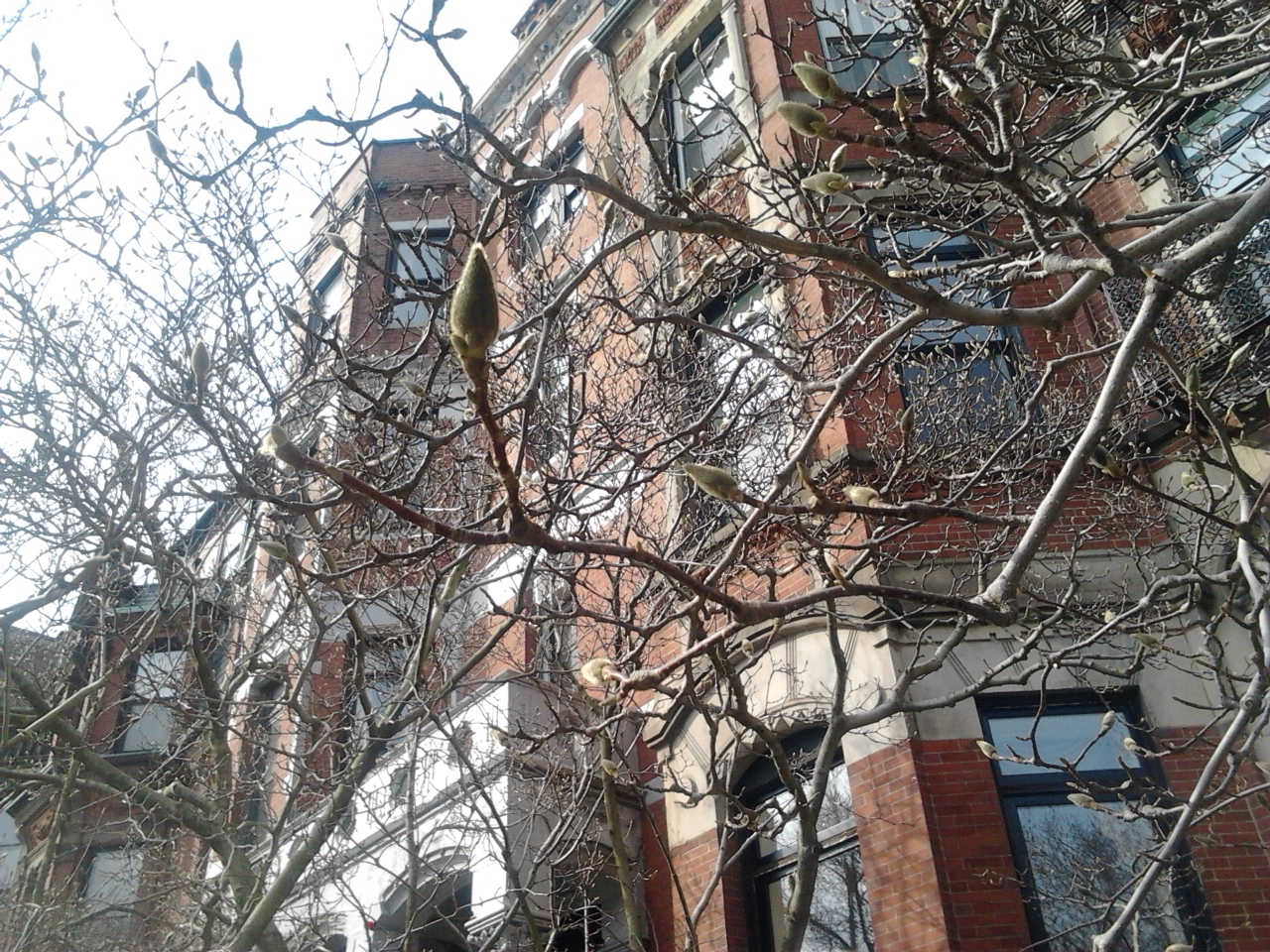 Figure 8: North side of Commonwealth Avenue. Flowers beggining to grow.
Figure 8: North side of Commonwealth Avenue. Flowers beggining to grow.
When comparing the north and south side of Commonwealth Avenue, the sign of sunlight becomes more obvious. Figure 9 shows a tree similar to the tree in Figure 8. However, the buds at the end of the branches in Figure 9 do not seem to be as large as the bud in Figure 8. This is because the south side does not get nearly as much sun as the north side during the day. Spirn argues for the importance of sunlight among one of the essential conditions: “Because plants are living organisms, a few necessities are essential for survival. The absence or insufficiency of a single limiting factor, be it water, air, light, or nutrients, will result first in reduced growth, then in decline and death” (Spirn 185). The north and south side of Commonwealth Avenue may get the same amount of air, water, and nutrients. But what causes buds on the south side to be smaller is the lack of sunlight.
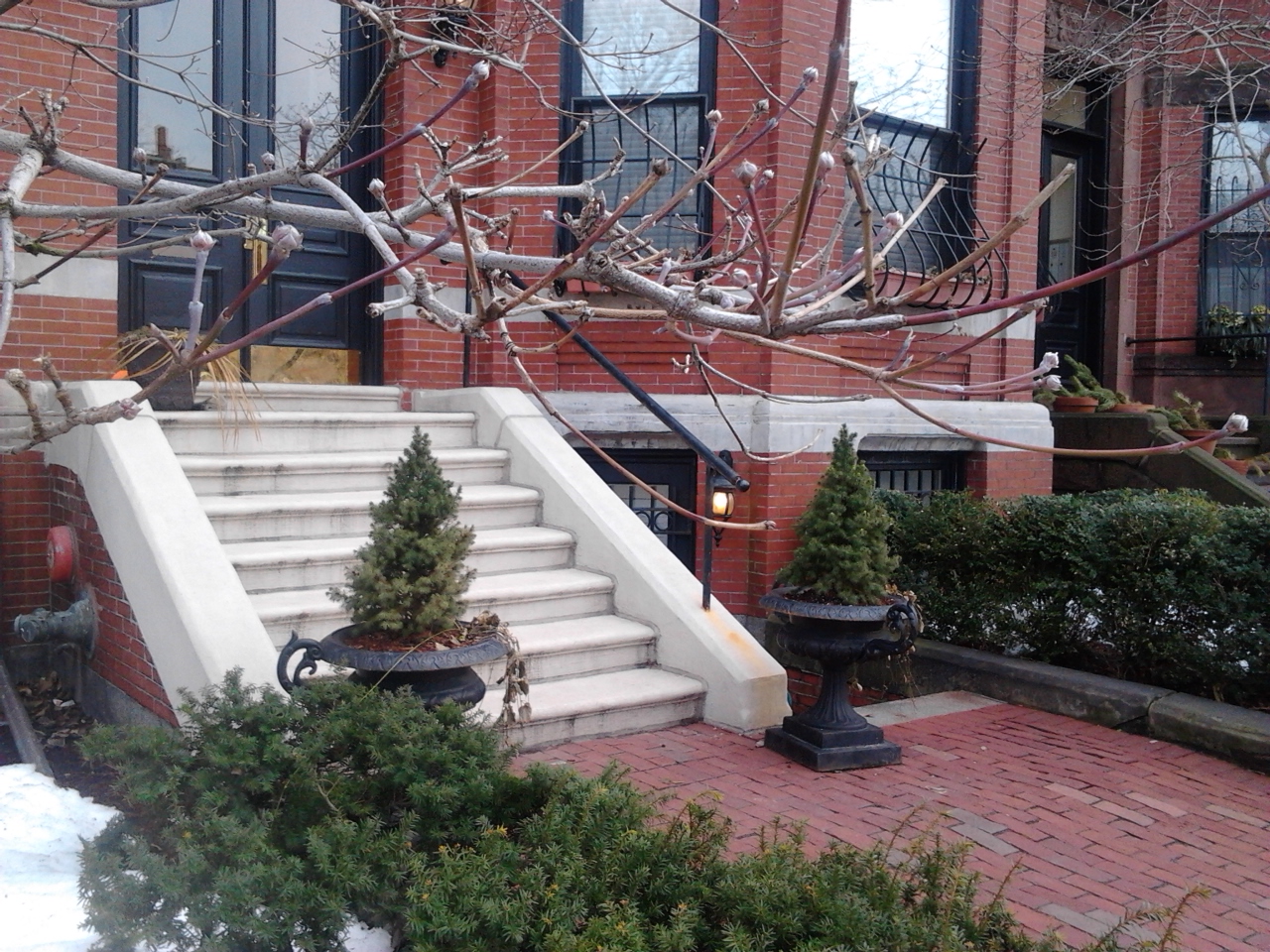 Figure 9: South side of Commonwealth Avenue. Buds are smaller than the ones in Figure 8.
Figure 9: South side of Commonwealth Avenue. Buds are smaller than the ones in Figure 8.
Another example of the influence of sunlight is the natural process occuring in Figure 10. On the south side of Commonwealth Avenue is a plant growing against a house shown in in Figure 10. This plant is located at the very base of the house-the worse location to get sunlight. As a result, the plant started to grow upwards towards sunlight, and used the house as a support.
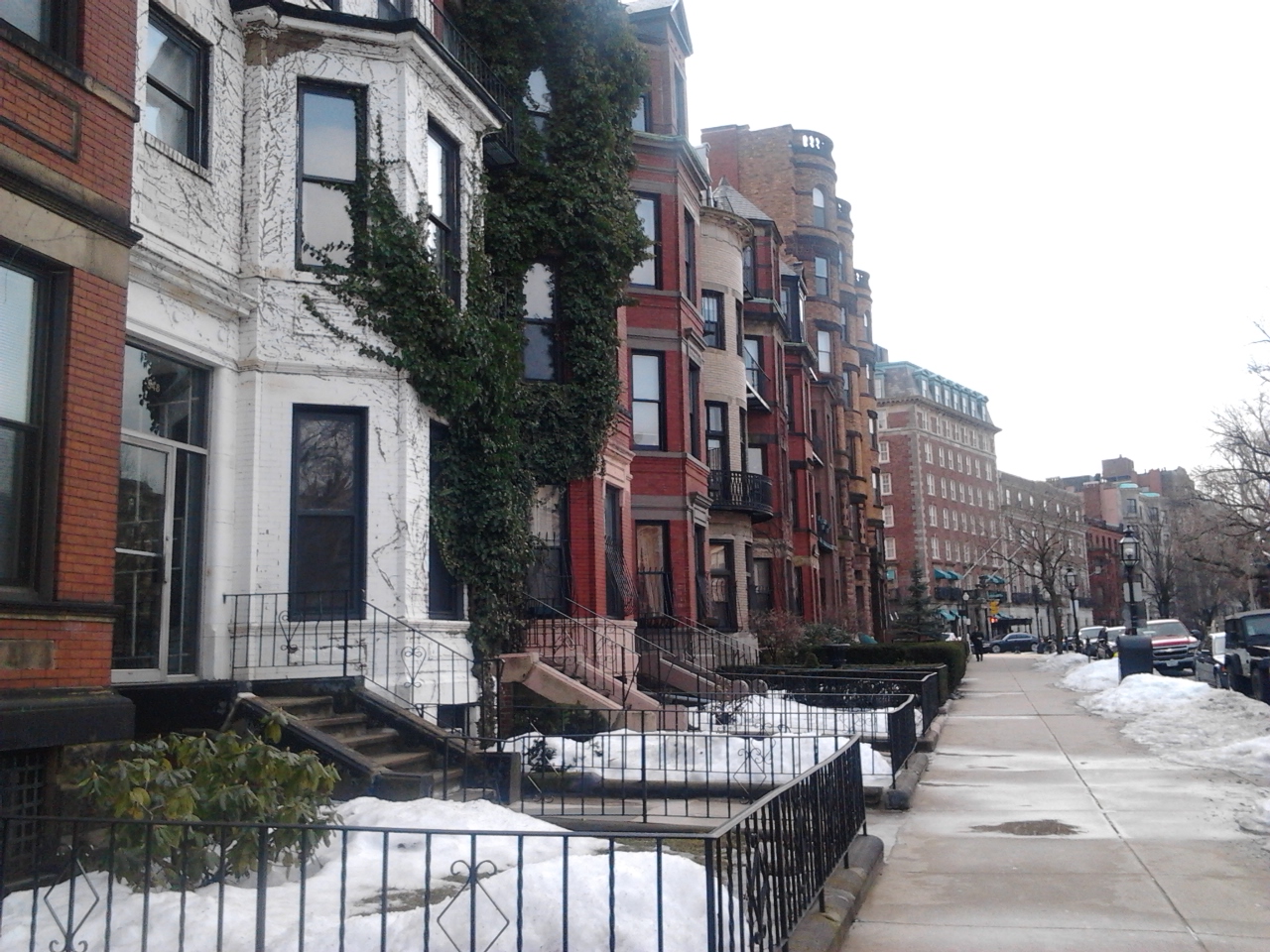 Figure 10: Plant growing along a house.
Figure 10: Plant growing along a house.
Most
trees on Commonwealth Avenue appear to be healthy. But not all are
lucky as shown in Figure 11. The stumped tree could be suffering from a
health issue. This is explained further in The Granite Garden:
"City plants must dontend with tremendous biological, physical, and
chemical stresses...Many plants cannot survive at all; others survive
in a dwarfed, distressed condition" (Spirn 175).
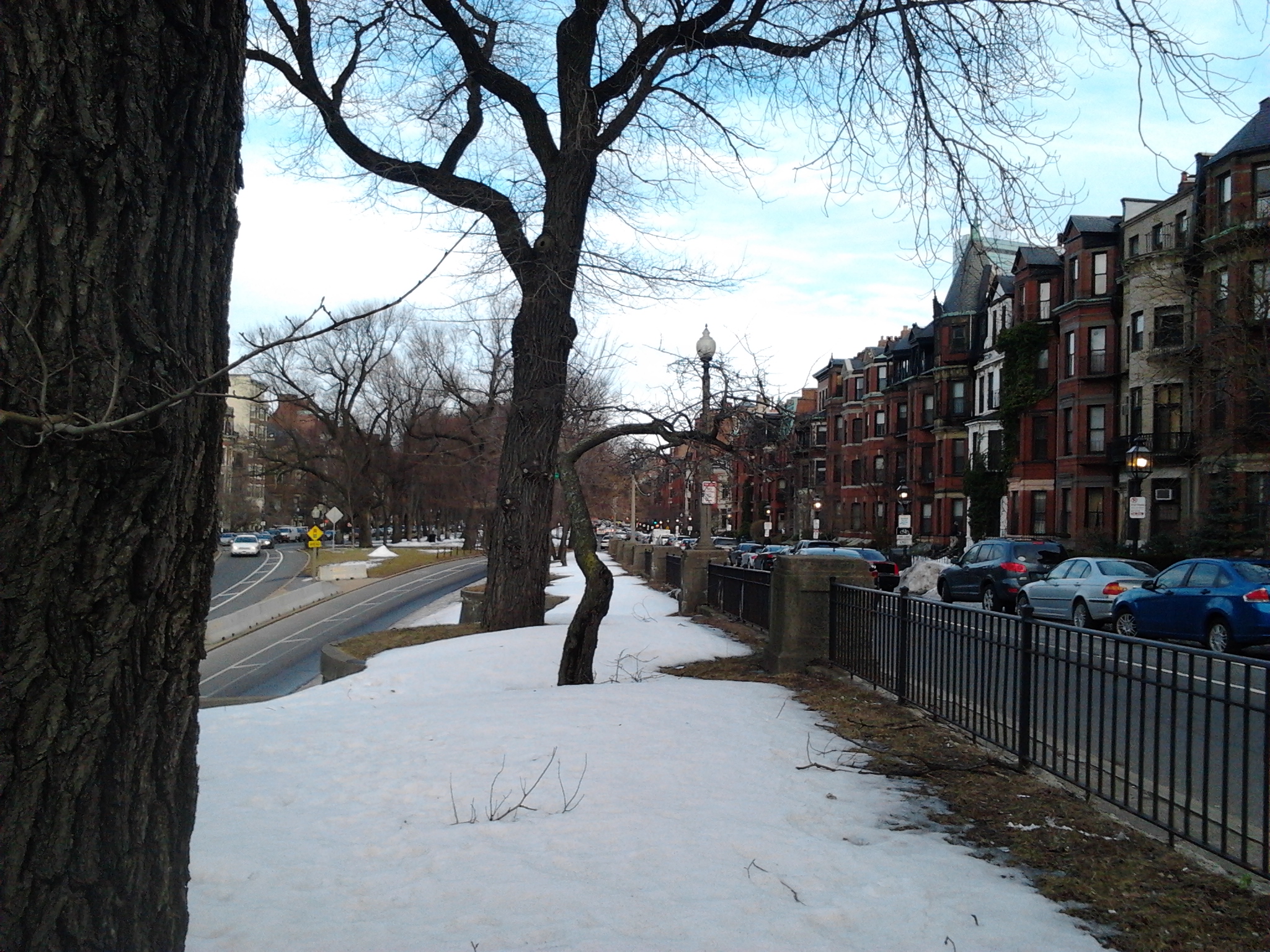 Figure 11: Stumped Tree
Figure 11: Stumped Tree
The Effects of Temperature
Because the sun naturally faces north, the south side currently has about a foot of snow on the sidewalks while the north side of Commonwealth Avenue measures to an inch. When looking for real estate on Commonwealth Avenue, one might notice that the prices of the north side houses and apartments are greater than those of the south side. This may be because is the sunlight provides better heating on the north side and people generally like the natural sunlight.
The Effects of Trees
Commonwealth Avenue was constructed to possibly encourage natural process of trees and plant life. But at the same time, Commonwealth Avenue seems to be against the natural growth. As a seemingly rich neighborhood, many trees were probably planted for aesthetic purposes as described here by Spirn: "Tress play only a minor, decorative role in the most recent downtown parks," (174). Currently, the wide sidewalks are paved in concrete while trees are set on the lawn of houses, or the center strip along Commonwealth Avenue. When trees grow, they reach their roots outwards and down into the ground the secure themselves. Overtime, this may cause the buckling of a cement sidewalk. Figure 12 is a great example of a buckling sidewalk along Hereford Street. A large tree may have been here, now replaced by a smaller tree, but the sidewalk was lifted and the gap was connected by a gravel pavement. Because there are no trees on the direct sidewalk, the problem of uneven pavements will not occur. This is a great example that shows the strugle between nature and man.
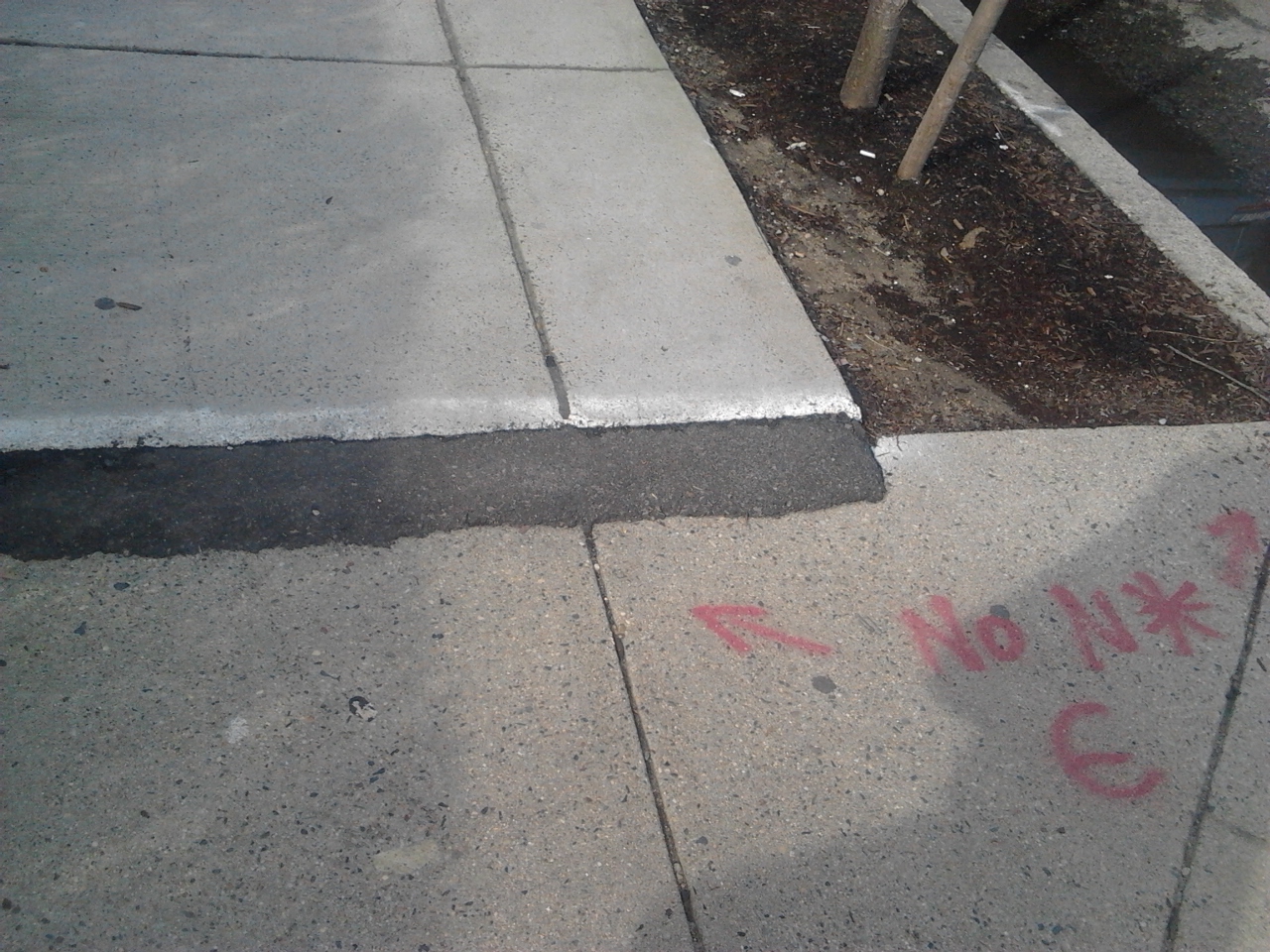 Figure 12: Raised sidewalk
Figure 12: Raised sidewalk
The Bigger Picture
In The Granite Garden, Spirn tells the story of how Boston losts most of its natural landscape due to interference by man, "The city has nibbled steadily at open land..." (174). As Spirn describes, Commonwealth Avenue is an example of how the vegitation was placed there as a natural resource, but human function had a greater influence. As a result, the natural process of sunlight on Commonwealth Avenue still occured but for all the wrong reasons (172). And as shown in Figure 11, there are consequences. Spirn predicts what will happen if man keeps interfering: "...cities will soon be hotter, dirtier, less attractive..." (175).
Newbury StreetNewbury Street is known for its commercial business. Unlike the residential Commonwealth Avenue where people spend time enjoying the outdoors, people who visit Newbury Street spend more time in stores than on the sidewalks. It is comparable to the Public Alleys where people would not spend a lot of time outside. It is apparent that not much is done to keep up the appearance of Newbury Street. Currently, there is little sign of vegetation on Newbury Street. The lack of vegetation was probably done on purpose to allow more resources and time to be spent on Commonwealth Avenue. As a result, unusual natural process have occured.
Effects of Water
One of the few natural processes is shown in Figure 13. This is an example of water effects on metal overtime. The rails are made of some type of metal. When metal is exposed to oxygen, oxidation will occur and the rusting process begins. This process is however slow. What has sped up the process is its interaction with water.
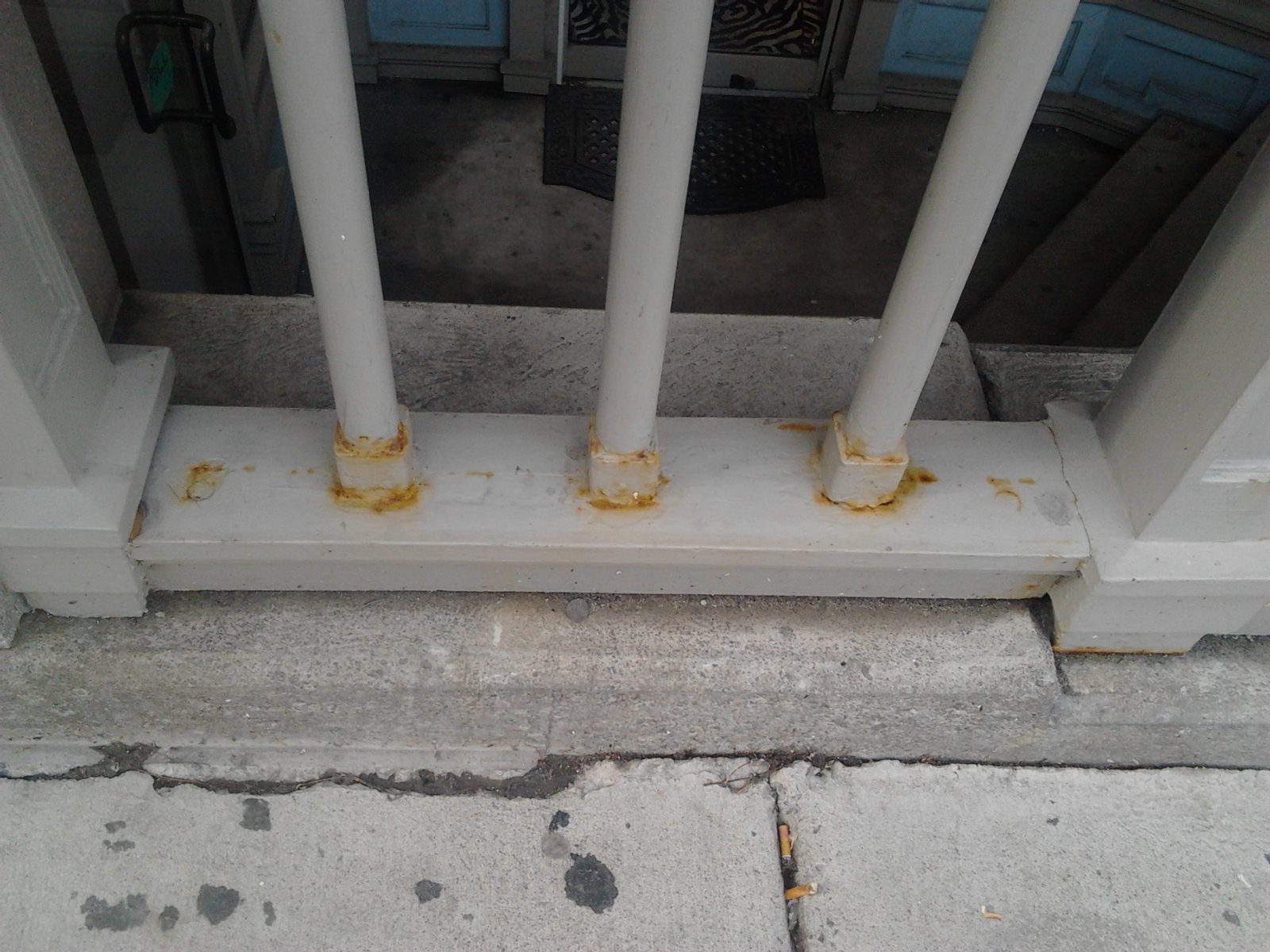
Figure 13: Rusting process taking place
Effects of Sunlight
Like the plant that grew along the side of the Building on Commonwealth Avenue, this plant is following in its location. The building is on the north side of Newbury Street but in the way it is situated, the right side of the building gets very little sunlight. As a result, the plant grows towards the sunlight, trying to absorb light energy. One can see the branches now growing in the front of the building.
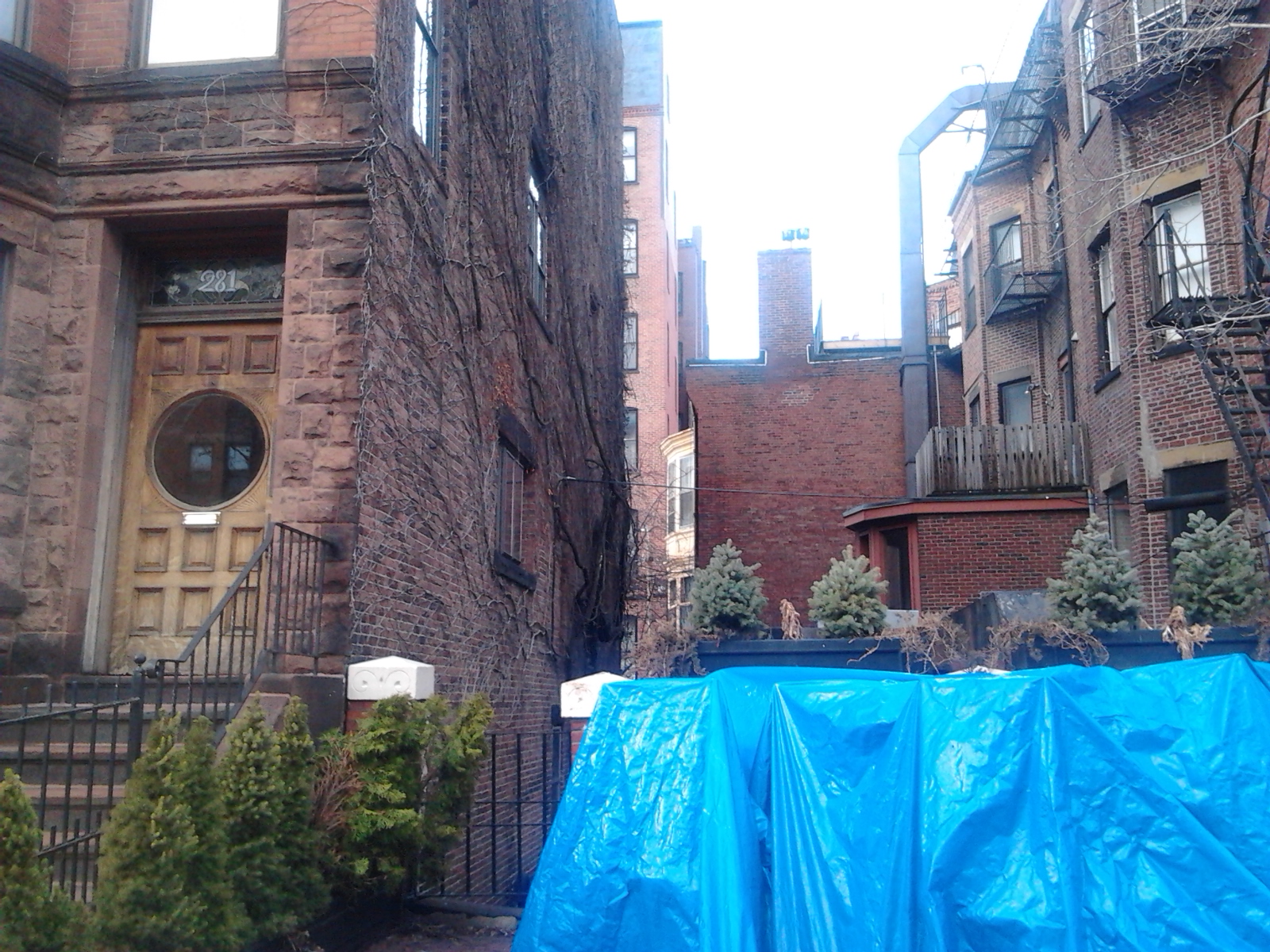
Figure 14: Plant growing along side of building.
The Bigger Picture
The fact that there are not a lot of apparent natural processes symbolizes something important about Newbury Street. Newbury Street exists because of shops and restaurants. It is very centered on materialism. The merchandise inside the clothing stores and other commercial businesses are man-made. This carries over to Newbury Street itself. Everything built on Newbury Street is catered to making a customer satisfied. Therefore, there are little signs of vegetation. In replacement of those trees are wider sidewalks to accompany the foot traffic.
Conclusion
The site I have chosen gives three great examples of the influence of natural processes on man-made creations. Because the Public Alleys were meant to be hidden from public view, natural processes such as errosion were allowed to occur on the drive way and parking lots. Commonwealth Avenue was created to please the need of the wealthy residents with plenty of sunlight which helped the vegetation. Newbury Street, tailored only to meet the needs of the shopping community, has caused for unusual natural processes. All three of these streets show the ongoing struggle between man and nature. The Granite Garden warns us of the consequences of not realizing the effects of natural processes and suggest a way how to build a better city: "The barrier to building a better city is not lack of knowledge, but refusal to apply that knowledge," (263).
Spirn, Anne Whiston. The Granite Gardern. Basic Books, 1984. Print.
Elkins, James. How to Use Your Eyes. Routledge: New York, NY. 2000: pp. vii-xi, 12-19, 28-33, 170-175.